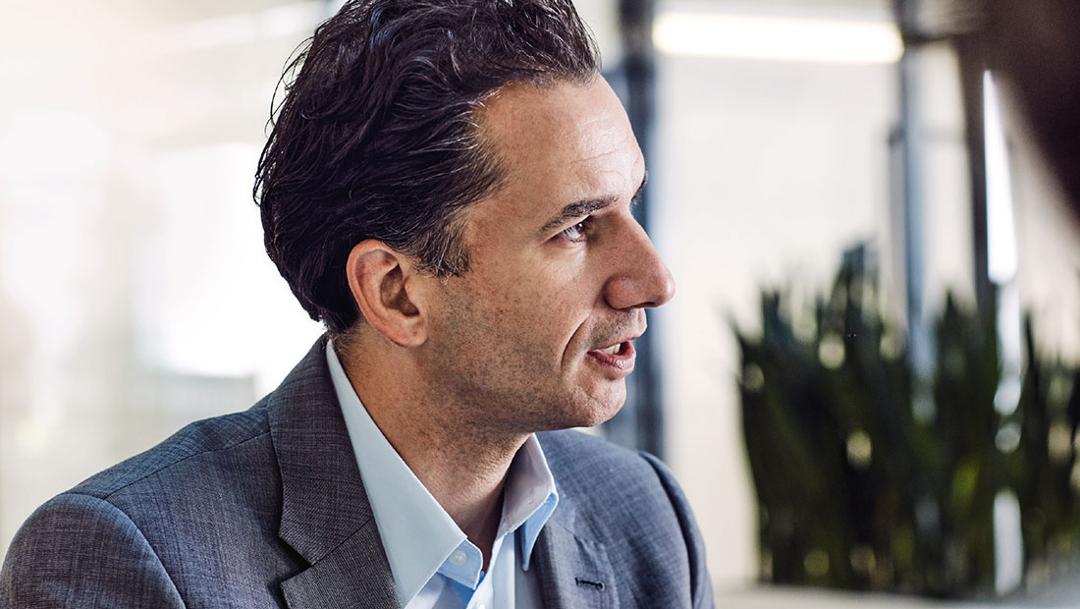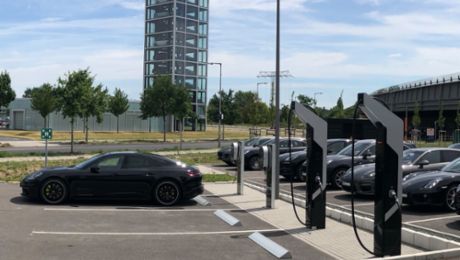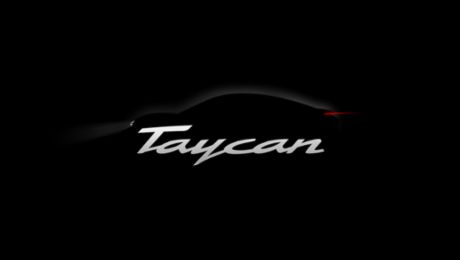“
Carmakers never bothered with the issue of fuel supply for combustion engines; they just left it up to the oil companies. Why has Porsche Engineering decided to develop its own charging park for electric cars?
Michael Kiefer (M.K.)— With the transition from combustion engines to electric drive units, I have to bring my customers along on a journey into the new electric world. With our brand, 100 percent of our customers are accustomed to combustion engines. So I’m confronted with a chicken-and-egg question. No charging network, no electric vehicles. And if there are no electric vehicles, no one will invest in a charging network. So we can only sell electric cars if we give customers the security of knowing that there is a viable charging network available. Porsche is therefore forging ahead and actively pushing the expansion of the charging infrastructure itself.
How are you doing that?
M.K.— For one thing, we are providing the market with an efficient solution, while at the same time the Volkswagen Group is participating in the “Ionity” joint venture for the expansion of a fast-charging network along the European highways. Once there are enough electric vehicles on the road, investors will undoubtedly jump on the bandwagon with charging stations and make a business case out of it with which they can make money. But to make this business model possible, we need a burst of initiative like our own efforts to make the overall concept viable in the first place.
Michael Kiefer: “With the charging infrastructure, the customer needs just a single charging card“
How important is a user-friendly charging system?
Otmar Bitsche (O.B.)— Very important. The current system with complicated payment modalities and extremely variable energy prices is a real barrier to the acceptance of electromobility
M.K.— Someone who wants to drive from Munich to Hamburg in an electric vehicle today needs multiple cards with which they have to authenticate themselves at the charging stations. Porsche eliminates this authentication rigmarole for customers by establishing contracts with all of the charging station operators, so the customer only needs one charging card that is accepted everywhere. And they can also count on a guaranteed electricity price that applies throughout the entire country. Customers of the Porsche charging service ultimately receive just one transparent bill from Porsche.
What distinguishes the charging park from Porsche Engineering from other charging station concepts?
M.K.— We have approached the charging park issue from the perspective of the customers who have to operate the charging stations. But also from the perspective of the operators who have to build these parks. For both, the market has few optimal solutions to offer. Their use is often complex or there are difficulties with the maintenance, servicing or diagnosis capabilities for such parks. So we have invested a great deal of effort in the issue of user-friendliness. Our charging stations even look different than the predominant ones seen today. They aid the customer through a design that guides the cable cleanly. We’ve also designed the overall system for the lowest possible power loss. That pay-off in terms of operating costs and the potential operator of the park stands to save a lot of money.
Thinking ahead: Michael Kiefer and Otmar Bitsche live out electromobility in their daily lives
Can the Porsche charging park be built in any location?
M.K.— We have two different variants, the charging park and the ChargeBox. The park is designed for locations with more available space in which a very high volume of charges is to be expected, 24 hours a day, seven days a week. With a small compact station, however, a charging park is possible in the city as well, for example in a residential area. For all areas with extreme space constraints, there is our second variant, the ChargeBox with an integrate battery. It can be connected to the normal low-voltage grid and enables fast charging in spite of its compact dimensions.
Is fast charging always the goal for Porsche?
M.K.— Yes. Our power range starts at about 150 kilowatts today and extends up to 350 kilowatts. In a later phase of development, it could be even more than that. We believe that everything that will be installed in the future will play out in this power range. In the public space, no one wants to have long-term parkers at the charging stations because charging takes so long. Low charging capacity is really only acceptable for charging at home.
The Porsche charging stations enable direct current fast charging with 800 volts. Can this be used by all electric cars currently on the market? What prerequisites do they have to fulfill for fast charging?
O.B.— Most electric cars can be charged with 50 kilowatts today, but not more.
M.K.— So future charging points will have to be free of discrimination. What that means is that all fastcharging stations, even if they offer 350 kilowatts, will have to be able to charge all electric cars on the market
Is inductive charging part of your future plans?
O.B.— On the vehicle side, absolutely. We plan to offer inductive charging later with the Mission E as well. But that does not allow fast charging. However, with this technology a vehicle can be charged in one’s own garage overnight with little complication. The dilemma with inductive charging is simply that there is not yet a binding standard in place. That is the objective of a joint research project with other manufacturers.
M.K.— The lack of a standard is currently standing in the way of public charging spots as well. Today there would have to be a dedicated induction charging spot for each manufacturer, and that is an entirely unattractive model for the operators of parking garages.
O.B.— With standardization it’s not just about the transmission of power; all the safety and communication pathways have to be standardized as well. Foreign object recognition, living object recognition, metal object recognition, the entire communication apparatus and even the positioning of the car all have to be standardized.
Otmar Bitsche: “We will offer inductive charging with the Mission E shortly after the market launch“
When will this standard emerge?
O.B.— With all the bells and whistles I think not before 2020. Perhaps we’ll manage to standardize power transmission by mid-2018.
What type of electric motor is a possibility for Porsche sports cars—asynchronous, synchronous or permanent magnet motors—and why?
O.B.— Permanent magnet synchronous motors are our choice. That is primarily due to three reasons. First: impressive power-to-weight ratio, i.e. a low weight with high output, because the excitation is provided by the permanent magnets. Second: very high torque. Third: sustained high performance is possible.
Is Porsche committed to the dual motor concept— with one motor on each of the axles?
O.B.— At the moment we are deliberately focusing on all-wheel technology. But other concepts are possible as well.
Currently high-voltage batteries using the latest lithium-ion technology are the gold standard. They offer an energy density of currently about 180 watt hours per kilogram. Are there battery concepts for the future that envision a significantly higher energy density?
O.B.— We expect an increase in energy content of roughly five percent per year. There’s a bit of hype surrounding the solid state electrolyte technology at the moment. We see major technical challenges there, but we’re watching it very closely. The lithium-ion technology definitely has a lot more potential through ceramic separators, through silicon dioxide, through electrolytes, etc.
The CCS plug complements the type 2 connector used as the standard in Europe
Does fast charging damage the battery?
O.B.— Not when it’s done properly. However, it’s not possible to get a 100 % charge with fast charging. As the charge level rises, the power has to be cut back. Altogether, we can charge for 400 kilometers in as little as 20 minutes without the battery suffering. That makes the charging experience very pleasant for the driver, because the vehicle controls the charging completely automatically.
M.K.— Whether on the vehicle or infrastructure side, we will offer the users of our systems a fast, flexible and efficient solution.
Info
Text first published in the Porsche Engineering Magazine, issue 01/2018
Interview: Hans Schilder // Photos: Heiko Simayer
Related Content
07/11/2018
Share
Share
Diesen Artikel teilen
Porsche embraces the challenge of e-mobility: The first Porsche fast charging park is located in Berlin.
08/12/2016
Share
Share
Diesen Artikel teilen
Porsche is advancing the 800-volt technology, which shows great potential.
06/08/2018
Share
Share
Diesen Artikel teilen
The future of mobility: The first purely electric Porsche has now been given its official name: Taycan.







